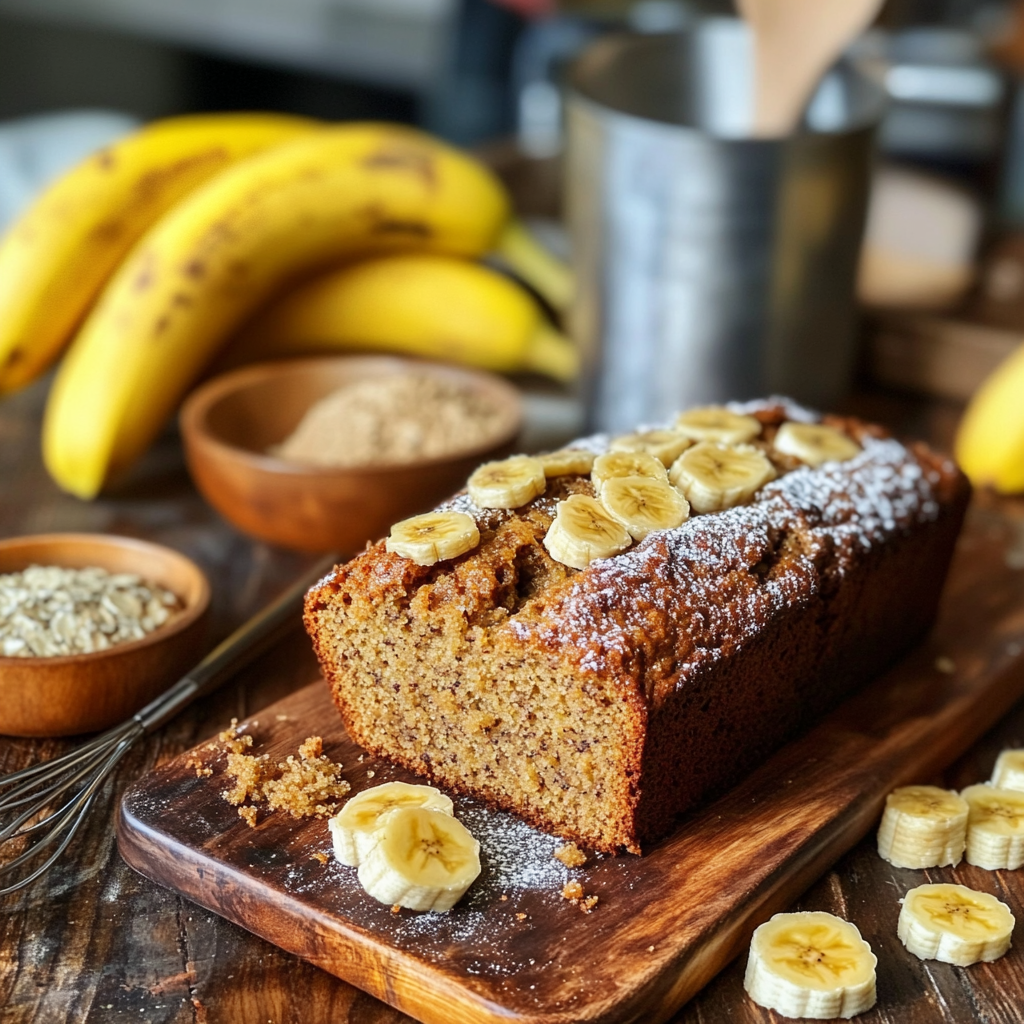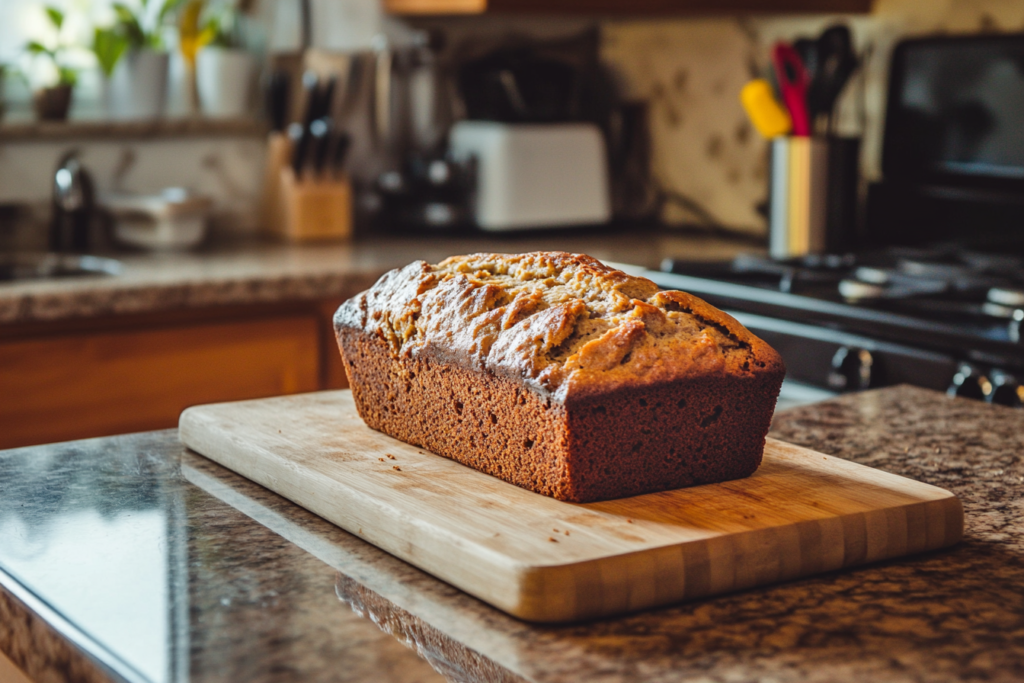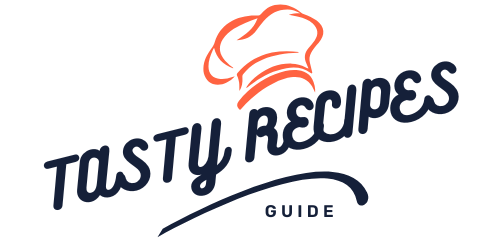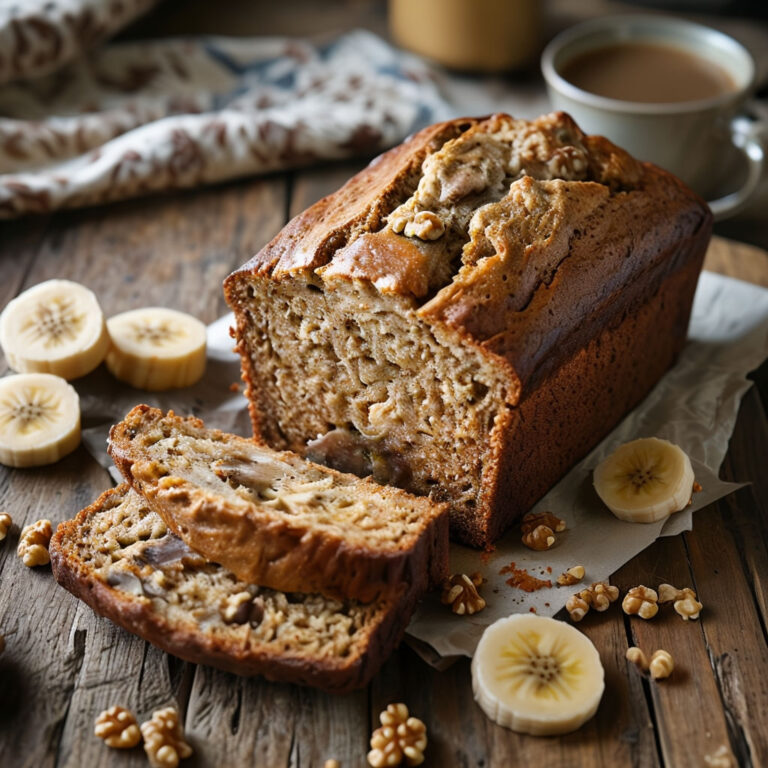Introduction to Banana Bread
What Makes Banana Bread Recipe a Timeless Treat?
Banana bread has stood the test of time, captivating taste buds with its perfect balance of sweetness and rich texture. Unlike other baked goods, it combines the humble banana with pantry staples to create something extraordinary. Its simplicity and adaptability make it an ideal recipe for bakers of all skill levels, allowing countless variations to suit personal tastes. Whether you’re adding a handful of chocolate chips, a sprinkle of nuts, or experimenting with alternative flours, banana bread never fails to impress. Its versatility—whether enjoyed as a quick breakfast, a mid-afternoon snack, or a comforting dessert—makes it a household favorite. The comforting aroma of banana bread baking in the oven can instantly uplift the mood, creating a sense of warmth and nostalgia that connects generations. It’s not just a treat; it’s a tradition, passed down and reinvented in kitchens around the world.
A Brief History of Banana Bread Recipe
Banana Bread Recipe traces its origins back to the Great Depression in the 1930s, when resourceful home cooks sought ways to reduce food waste. Overripe bananas, instead of being discarded, became the star ingredient in this inventive baked creation. Since then, its popularity has surged, becoming a staple in kitchens worldwide.
Why Banana Bread Recipe Is the Perfect Comfort Food
Few things evoke nostalgia and warmth like the aroma of freshly baked banana bread wafting through the kitchen. The combination of sweet bananas, moist crumb, and subtle spices delivers a sensory experience that feels like a warm hug. Its simplicity and adaptability ensure there’s a version for everyone—whether classic, nutty, or chocolatey.
Essential Ingredients for the Perfect Banana Bread
Choosing the Right Bananas: Ripe vs. Overripe
The secret to the best banana bread lies in the bananas. Overripe bananas with brown speckles are ideal, as their higher sugar content enhances sweetness and flavor. Ripe bananas, while acceptable, lack the concentrated sweetness that makes banana bread exceptional.
Exploring Flour Types for Texture Perfection
While all-purpose flour is the traditional choice, experimenting with alternative flours can elevate your banana bread. Options like almond flour for a nutty flavor or whole wheat flour for added fiber create unique textures. For gluten-free bakers, blends of rice flour, tapioca starch, and xanthan gum provide excellent results.
Sugars, Spices, and Everything Nice: Enhancing Flavor
Granulated sugar adds sweetness, while brown sugar introduces a molasses-like depth. Adding spices like cinnamon, nutmeg, or even cardamom can transform the flavor profile. A pinch of salt balances the sweetness, while vanilla extract enhances the aroma.

Tools You’ll Need
Must-Have Baking Tools for Banana Bread
Creating perfect banana bread doesn’t require a professional kitchen, but a few essential tools are necessary:
- A medium-sized mixing bowl for wet ingredients and a larger one for dry.
- A whisk, spatula, or hand mixer for combining.
- A standard loaf pan (9×5 inches) ensures even baking.
- Measuring cups and spoons for accuracy.
Preparing Your Workspace for Hassle-Free Baking
A clean and organized workspace is key to a stress-free baking experience. Lay out all your ingredients, pre-measured, and ensure your oven is preheated to the correct temperature. Grease or line your loaf pan with parchment paper to prevent sticking.
The Science Behind Moist Banana Bread
The Role of Bananas in Texture and Moisture
Bananas act as a natural sweetener and moisture provider in the batter. Their high pectin content gives banana bread its signature softness. Overripe bananas, in particular, break down easily, integrating seamlessly into the batter for a smoother texture.
Key Baking Tips for Preventing Dry Bread
Achieving the perfect level of moisture requires attention to detail:
- Avoid overmixing the batter; it can lead to a dense loaf.
- Monitor the oven closely and avoid overbaking, which dries out the bread.
- Incorporate ingredients like Greek yogurt, sour cream, or oil for an extra moist crumb.
Common Variations and Additions
Adding Nuts, Chocolate Chips, or Dried Fruit
For those seeking extra flavor and texture, mix-ins are a game-changer. Popular options include:
- Chopped walnuts or pecans for crunch.
- Chocolate chips for added indulgence.
- Raisins or dried cranberries for a fruity twist.
Dairy-Free and Vegan Substitutions
Veganizing banana bread is simple with a few tweaks:
- Replace eggs with flaxseed meal or applesauce.
- Swap butter for coconut oil or vegan margarine.
- Use non-dairy milk, like almond or oat, for added moisture.
Gluten-Free Banana Bread: Tips and Tricks
Creating gluten-free banana bread requires a well-balanced flour mix. Pre-blended gluten-free flours simplify the process. Adding xanthan gum improves structure, and a combination of almond flour adds richness.
Why Your Banana Bread Didn’t Turn Out Perfect
Troubleshooting Common Banana Bread Recipe Mistakes
- Dense Texture: Overmixing the batter or insufficient leavening agents can lead to a dense loaf.
- Soggy Bottom: Undercooked bread or too much banana causes a soggy texture. Ensure your loaf pan is greased, and bake until a skewer inserted comes out clean.
- Cracked Top: A cracked top is a common aesthetic issue caused by oven temperature. Cover with foil mid-bake to prevent this.
Mastering the Art of Banana Bread Recipe
Step-by-Step Guide to Making Banana Bread Recipe
Preparing Your Ingredients: Mise en Place
Organization is key to seamless baking. Gather all your ingredients and tools before starting:
- Bananas: 3-4 overripe ones for optimal sweetness and moisture.
- Eggs: Two, for structure and binding.
- Flour: Measure carefully to avoid dry bread.
- Butter or oil: Adds richness and moisture.
- Sugars, leavening agents, and spices: Enhance flavor and ensure a perfect rise.
Measure everything accurately, and let refrigerated items, like eggs and butter, come to room temperature. This ensures better integration of ingredients.
The Perfect Banana Mash: How to Get It Right
Mashing bananas might seem straightforward, but technique matters. Use a fork or potato masher to create a mostly smooth consistency, leaving a few chunks for added texture. A food processor can be used for a velvety puree, but avoid overprocessing, as it can turn gummy.
Mixing the Wet and Dry Ingredients: Avoiding Overmixing
The secret to tender Banana Bread Recipe lies in the mixing.
- Step 1: Combine wet ingredients, starting with mashed bananas, sugar, eggs, and vanilla.
- Step 2: In a separate bowl, sift together dry ingredients like flour, baking soda, and spices.
- Step 3: Gradually fold dry ingredients into the wet mixture. Stop mixing as soon as no streaks of flour remain.
Oven Preparation and Baking Tips
Preheating the Oven: Why It’s Crucial
Always preheat your oven to 350°F (175°C) before starting. Proper preheating ensures an even rise and prevents uneven cooking.
Ideal Baking Temperatures and Times
Bake banana bread in the center of the oven for consistent heat distribution. A standard loaf takes about 50-60 minutes. For smaller loaves or muffins, reduce the baking time accordingly.
Testing for Doneness Without Guesswork
Insert a toothpick or skewer into the center of the loaf. If it comes out clean or with a few crumbs, the bread is ready. Avoid overbaking, which can lead to a dry texture.
Presentation and Serving Suggestions
Cooling Tips for the Best Texture
Allow the bread to cool in the pan for 10-15 minutes after baking. Then transfer it to a wire rack to cool completely. This prevents a soggy bottom and ensures even texture throughout.
Slicing Techniques for Perfect Portions
Use a serrated knife for clean slices. For smaller servings, slice the loaf into halves or thirds before cutting individual pieces. Warm slices can be tricky to cut cleanly, so patience is key.
Creative Serving Ideas: Toppings and Pairings
Banana bread is versatile and pairs wonderfully with:
- Butter or cream cheese for a classic touch.
- Nutella or almond butter for indulgence.
- Fresh fruits or yogurt for a healthy breakfast option.
Storage and Shelf Life
How to Store Banana Bread to Keep It Fresh
Wrap cooled bread tightly in plastic wrap or foil to lock in moisture. Store at room temperature for up to 3 days. If refrigerating, keep it in an airtight container to prevent drying out.
Freezing Banana Bread: Step-by-Step Instructions
Banana bread freezes exceptionally well. Here’s how:
- Let the bread cool completely.
- Wrap the loaf or individual slices in plastic wrap.
- Place in a freezer-safe bag or container.
- Freeze for up to 3 months. To thaw, leave it at room temperature or microwave slices for a quick refresh.
Reheating Tips for That Freshly-Baked Taste
For a warm, oven-fresh experience, reheat slices in a toaster or oven at 300°F (150°C) for 5-7 minutes. Microwave slices for 15-20 seconds for a softer texture.
The Healthier Banana Bread Alternatives
Reducing Sugar Without Sacrificing Flavor
Cutting down on sugar doesn’t mean sacrificing taste. Substitute half the sugar with natural sweeteners like:
- Honey or maple syrup for a rich depth of flavor.
- Mashed dates or applesauce for added moisture.
Adding Superfoods for a Nutritional Boost
Elevate your banana bread with nutrient-dense additions:
- Chia seeds or flaxseeds for fiber and omega-3s.
- Cacao nibs instead of chocolate chips for antioxidants.
- Shredded carrots or zucchini for added vitamins and a moist texture.
Elevating Banana Bread for Every Occasion
Banana Bread for Special Occasions
Holiday-Themed Banana Bread: Creative Ideas
Banana bread can easily become a festive centerpiece with a few tweaks:
- Pumpkin Spice Banana Bread: Add pumpkin puree and warm spices like allspice and ginger for an autumnal twist.
- Cranberry Orange Banana Bread: Mix in dried cranberries and orange zest for a zesty, holiday-inspired flavor.
- Chocolate Peppermint Banana Bread: Add crushed peppermint candy and chocolate chips for a winter wonderland vibe.
Decorate the top with powdered sugar, candied fruits, or edible glitter for a holiday-ready presentation.
Gifting Banana Bread: Packaging and Presentation
Homemade banana bread makes an excellent gift. Wrap it beautifully to impress:
- Use parchment paper and twine for a rustic look.
- Place the loaf in decorative tins or gift boxes.
- Add personalized tags with serving suggestions or a handwritten note for a thoughtful touch.
Fun Twists for Kids and Family-Friendly Versions
To make banana bread more appealing to kids:
- Create mini loaves or muffins for easy snacking.
- Add colorful mix-ins like rainbow sprinkles or white chocolate chips.
- Incorporate fun shapes by baking in novelty pans.
Cultural and Regional Variations
Exploring International Takes on Banana Bread
Banana bread has been adapted in unique ways across the globe:
- Jamaican Banana Bread: Includes rum-soaked raisins and a hint of nutmeg.
- Filipino Banana Cake: Sweeter and often topped with buttercream frosting or caramelized sugar.
- Australian Banana Bread: Frequently served toasted with a spread of butter for a café-style experience.
Unique Ingredients Found in Different Regions
Ingredients like coconut milk, spiced sugar, or nuts native to specific areas add a local touch. For example:
- Southeast Asia uses pandan or jackfruit for a tropical flavor.
- African recipes might include plantains for a denser texture.
Banana Bread as a Culinary Trend
Social Media’s Role in Popularizing Banana Bread
During the 2020 pandemic, banana bread trended globally, with countless recipes and variations shared on platforms like Instagram and TikTok. Its simplicity, affordability, and adaptability made it a viral sensation.
Viral Recipes and Trends You Should Try
Innovative takes on banana bread include:
- Banana Bread Cheesecake: A hybrid dessert with a creamy cheesecake layer.
- Stuffed Banana Bread: Filled with Nutella, peanut butter, or caramel for surprise centers.
- Banana Bread Pancakes: Flattened batter cooked like pancakes for a breakfast twist.
Banana Bread Pairings and Recipes
Banana Bread and Coffee: The Ultimate Duo
The nutty and sweet notes of banana bread complement coffee perfectly. Pair it with:
- A robust dark roast to contrast the sweetness.
- Creamy lattes for a harmonious blend.
- Flavored coffee, such as hazelnut or vanilla, to elevate the experience.
Pairing Banana Bread with Savory Dishes
Banana bread can balance savory meals, like:
- A side dish to soups, such as butternut squash or lentil stew.
- Paired with cream cheese and smoked salmon for a gourmet snack.
- Accompanied by a charcuterie board for a mix of flavors.
Transforming Leftovers into New Dishes
Repurpose banana bread into exciting new creations:
- Banana Bread French Toast: Dip slices in egg batter and pan-fry for a decadent breakfast.
- Banana Bread Pudding: Layer chunks with custard and bake for a comforting dessert.
- Banana Bread Croutons: Cube and toast to sprinkle over yogurt or ice cream.
Conclusion
Banana bread is far more than a simple baked treat—it’s a versatile culinary staple that adapts to countless flavors, occasions, and preferences. Whether you enjoy it as a standalone snack, a complement to savory dishes, or as the foundation for creative new recipes, banana bread delivers on both taste and nostalgia. From breakfast to dessert, and even as a gourmet addition to savory spreads, its ability to shine in any role makes it a timeless favorite. So, the next time you have a few overripe bananas sitting on your counter, turn them into something extraordinary and experience the endless possibilities this classic has to offer!

FAQs About Banana Bread
- Can You Use Frozen Bananas?
Yes! Thaw frozen bananas before mashing them. They’re often sweeter and juicier than fresh bananas. - What’s the Best Way to Make Banana Bread Vegan or Gluten-Free?
Use plant-based substitutes like flax eggs and non-dairy milk for vegan bread. For gluten-free options, use a blend of rice flour, almond flour, and xanthan gum. - How Can You Prevent a Soggy Bottom?
Ensure your loaf pan is properly greased or lined, and bake at the correct temperature for the full time. Always check for doneness with a toothpick. - Why Is My Banana Bread Dense?
Overmixing the batter activates gluten, resulting in a dense loaf. Mix gently until ingredients are just combined. - Can I Add Protein Powder to Banana Bread?
Absolutely! Replace some of the flour with protein powder, but adjust the liquids to prevent dryness. - What’s the Best Way to Achieve a Crispy Top?
Sprinkle the batter with granulated sugar or a streusel topping before baking. - How Do I Avoid Overbrowning?
Cover the loaf with foil during the last 15 minutes of baking to protect the top from overbrowning. - Can I Make Banana Bread Without Sugar?
Yes, replace sugar with natural sweeteners like mashed dates, honey, or agave syrup. - What’s the Best Oil to Use in Banana Bread?
Neutral oils like vegetable or canola work well, but coconut oil adds a subtle, tropical flavor. - How Can I Store Banana Bread Without Losing Freshness?
Wrap it in plastic wrap or foil and store it in an airtight container. For longer storage, freeze slices individually.

